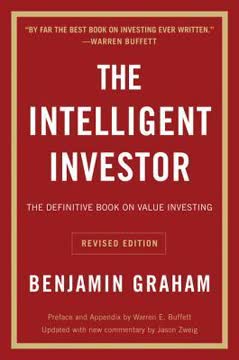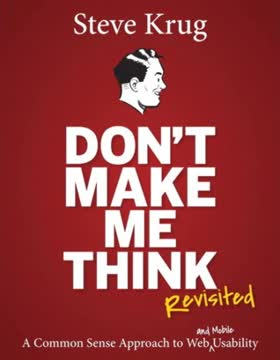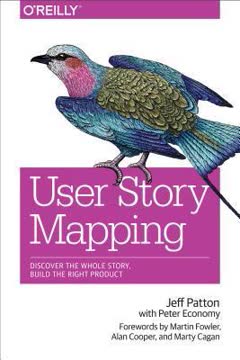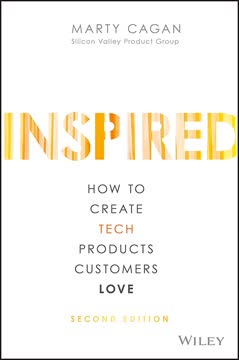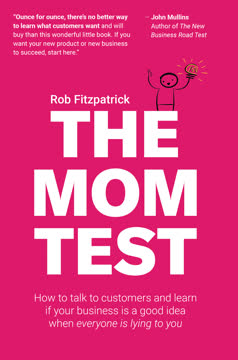Anahtar Çıkarım
1. Ürün Sahibi: Çevik Gelişimde Vizyoner ve Karar Verici
Ürün sahibi, nihai ürünü hayal edebilen ve bu vizyonu iletebilen bir vizyonerdir.
Çok yönlü rol. Scrum'da Ürün Sahibi, geleneksel ürün yöneticisi, proje yöneticisi ve müşteri temsilcisi sorumluluklarını birleştiren kritik bir roldür. Bu kişi şunlardan sorumludur:
- Ürün vizyonunu oluşturmak ve sürdürmek
- Ürün backlog'unu yönetmek
- Sürüm planlaması yapmak
- Paydaşlarla iş birliği yapmak
- Ürün özellikleri ve öncelikleri hakkında önemli kararlar almak
Gerekli nitelikler. Başarılı bir Ürün Sahibi şu özelliklere sahip olmalıdır:
- Güçlü liderlik ve iletişim becerileri
- Müşteri ihtiyaçları ve pazar trendleri hakkında derin bir anlayış
- Zor kararlar alabilme ve etkili bir şekilde önceliklendirme yeteneği
- Geliştirme ekibiyle yakın iş birliğine bağlılık
2. Çekici Bir Ürün Vizyonu Oluşturmak: Başarı İçin Yol Haritası
Vizyon, görünmeyen şeyleri görme sanatıdır.
Yol gösterici ışık. Bir ürün vizyonu, tüm geliştirme çabası için kuzey yıldızı görevi görür, ekibe yön ve ilham sağlar. Etkili bir vizyon şunları yapmalıdır:
- Hedef müşteriler, ürün faydaları ve pazar konumlandırması hakkında temel soruları yanıtlamak
- Tüm ekip üyeleri ve paydaşlar tarafından paylaşılmak ve anlaşılmak
- Yaratıcılığa ve uyum sağlamaya olanak tanıyacak kadar geniş kalmak
Vizyon oluşturma. Çekici bir vizyon geliştirme teknikleri şunları içerir:
- Prototipler ve maketler
- Kişilikler ve senaryolar
- Vizyon kutusu ve ticaret dergisi incelemesi
- Kano Modeli ile memnun ediciler ve temel özellikleri belirleme
3. Minimal Pazarlanabilir Ürün: Değeri Daha Hızlı Sunmak
Orta halli bir fikri harika bir ekibe verirseniz, ya onu düzeltirler ya da işe yarayan bir şeyle değiştirirler.
Özlere odaklanma. Minimal Pazarlanabilir Ürün (MMP) konsepti, müşterilere değer sağlayan en küçük özellik setini sunmayı vurgular. Bu yaklaşımın faydaları şunlardır:
- Daha hızlı pazara çıkış süresi
- Azaltılmış geliştirme maliyetleri
- Daha erken müşteri geri bildirimi
- Geliştirilmiş risk azaltma
Yinelemeli büyüme. MMP ile başlayarak ve müşteri geri bildirimlerine göre yineleyerek, ekipler şunları yapabilir:
- Aşırı mühendislikten ve özellik şişkinliğinden kaçınmak
- Değişen pazar koşullarına hızlıca uyum sağlamak
- Gerçekten müşteri ihtiyaçlarını karşılayan bir ürün inşa etmek
4. Ürün Backlog'unu Ustaca Yönetmek: DEEP Yaklaşımı
Ürün backlog'u, ürünü hayata geçirmek için gerekli olan işlerin öncelikli bir listesidir.
DEEP özellikleri. Etkili bir ürün backlog'u şu şekilde olmalıdır:
- Uygun şekilde detaylandırılmış: Daha yüksek öncelikli maddeler daha detaylıdır
- Tahmin edilmiş: Maddeler planlamayı kolaylaştıracak şekilde boyutlandırılmıştır
- Gelişen: Yeni bilgiler toplandıkça backlog evrilir
- Öncelikli: Maddeler önem ve değere göre sıralanır
İş birliği içinde bakım. Tüm Scrum ekibini içeren düzenli backlog bakım oturumları şunlara yardımcı olur:
- Yeni maddeler keşfetmek ve tanımlamak
- Mevcut maddeleri iyileştirmek
- Backlog'u önceliklendirmek
- Yaklaşan sprintler için maddeleri hazırlamak
5. Etkili Sürüm Planlaması: Zaman, Maliyet ve İşlevselliği Dengelemek
Planlama ... değer arayışıdır.
Esnek yaklaşım. Çevik sürüm planlaması, esnekliği korurken değer sunmaya odaklanır. Temel ilkeler şunlardır:
- Zaman ve maliyeti sabitleyip işlevselliği esnetmek
- Geliştirme boyunca tutarlı kaliteyi sürdürmek
- Uzun vadeli planlamayı yönlendirmek için bir ürün yol haritası kullanmak
Planlama teknikleri. Etkili sürüm planlaması şunları içerir:
- Ürün vizyonuna dayalı olarak gerçekçi sürüm tarihleri belirlemek
- İlerlemeyi tahmin etmek için hızı kullanmak
- Sürüm burndown grafiği oluşturmak ve sürdürmek
- Müşteri geri bildirimlerine ve değişen önceliklere göre planı uyarlamak
6. Hız ve Sürüm Burndown: İlerlemeyi İzlemek ve Tahmin Etmek
Çalışan yazılım, ilerlemenin birincil ölçüsüdür.
Hız ölçümü. Hız, bir ekibin bir sprintte tamamlayabileceği iş miktarını temsil eden Scrum'da önemli bir metriktir. Şunlar için kullanılır:
- Ekip ilerlemesini izlemek
- Gelecek sprint kapasitelerini tahmin etmek
- Sürüm planlamasına yardımcı olmak
Sürüm burndown. Sürüm burndown grafiği veya çubuğu, proje ilerlemesinin görsel bir temsilini sağlar ve şunları gösterir:
- Ürün backlog'undaki kalan çaba
- Zaman içinde tamamlanan işler
- Mevcut hıza dayalı olarak tahmini tamamlanma tarihi
Bu araçlar, ekiplerin potansiyel sorunları erken tespit etmelerine ve sürüm hedeflerini karşılamak için gerekli ayarlamaları yapmalarına yardımcı olur.
7. Erken ve Sık Sürümler: Müşteri Memnuniyetinin Anahtarı
En yüksek önceliğimiz, değerli yazılımın erken ve sürekli teslimatı yoluyla müşteriyi memnun etmektir.
Sürekli geri bildirim döngüsü. Ürün artışlarını erken ve sık sürmek birçok fayda sağlar:
- Gerçek kullanıcı geri bildirimi ile ürün varsayımlarını doğrulamak
- Gerekirse hızlı yön değişikliği sağlamak
- Müşteri güveni ve bağlılığı oluşturmak
- Öğrenme ve yeniliği hızlandırmak
Uygulama zorlukları. Sık sürümleri desteklemek için ekipler şunları yapmalıdır:
- Yüksek yazılım kalite standartlarını sürdürmek
- Verimli dağıtım süreçleri uygulamak
- Küçük, sürülebilir artışlarla özellikler geliştirmek
- Müşterilerle net iletişim kanalları kurmak
8. Çevikliği Ölçeklendirme: Büyük Projeler ve Organizasyonlar İçin Stratejiler
Tek bir ürün backlog'u kullanın.
Ölçeklendirme dikkate alınması gerekenler. Projeler ve organizasyonlar büyüdükçe, Scrum'u uygulamada ek zorluklar ortaya çıkar. Ölçeklendirme için temel stratejiler şunlardır:
- Büyük projeler için bile tek bir ürün backlog'u sürdürmek
- Karmaşık ürünler için bir Ürün Sahipleri hiyerarşisi uygulamak
- 2-3 sprint ötesine bakmak için bakım ufkunu genişletmek
- Ürün backlog'una ekip özelinde bakış açıları sağlamak
Organizasyonel uyum. Başarılı ölçeklendirme şunları gerektirir:
- Güçlü liderlik desteği
- Ekipler arasında net iletişim kanalları
- Organizasyon genelinde tutarlı süreçler ve araçlar
- Düzenli ekipler arası koordinasyon ve iş birliği
Son güncelleme::
FAQ
What's "Agile Product Management with Scrum" about?
- Focus on Product Owners: The book provides a comprehensive guide for product owners in Scrum, detailing their roles, responsibilities, and how they can effectively manage product backlogs.
- Practical Advice: It offers practical insights and techniques for product owners to maximize the value of their products through effective Scrum practices.
- Vision and Leadership: The book emphasizes the importance of having a strong product vision and the leadership qualities required to guide a Scrum team.
- Iterative and Incremental Approach: It explains how to use Scrum's iterative and incremental nature to create products that customers love.
Why should I read "Agile Product Management with Scrum"?
- Role Clarity: It provides clarity on the product owner role, which is often misunderstood or underrepresented in agile projects.
- Expert Insights: The book is written by Roman Pichler, a leading expert in agile product management, offering valuable insights and real-world examples.
- Comprehensive Guide: It covers all aspects of agile product management, from envisioning the product to release planning and collaboration in sprint meetings.
- Practical Tools and Techniques: Readers will gain access to practical tools and techniques that can be directly applied to their Scrum projects.
What are the key takeaways of "Agile Product Management with Scrum"?
- Product Owner Role: Understanding the multifaceted role of the product owner and the importance of empowerment and collaboration.
- Vision and Simplicity: The significance of having a clear product vision and focusing on simplicity to create minimal marketable products.
- Release Planning: The importance of fixing time and quality while flexing functionality to ensure successful product releases.
- Continuous Improvement: Emphasizing the need for regular reflection and adaptation through sprint retrospectives and stakeholder feedback.
What are the best quotes from "Agile Product Management with Scrum" and what do they mean?
- "Vision is the art of seeing things invisible." This quote highlights the importance of having a clear and compelling product vision that guides the development process.
- "Good business leaders create a vision, articulate the vision, passionately own the vision, and relentlessly drive it to completion." It underscores the leadership qualities required of a product owner to successfully guide a Scrum team.
- "Our highest priority is to satisfy the customer through early and continuous delivery of valuable software." This reflects the agile principle of delivering value to customers through frequent releases and feedback loops.
- "Plans are nothing; planning is everything." This emphasizes the importance of the planning process in adapting to change and ensuring project success.
How does Roman Pichler define the product owner role in "Agile Product Management with Scrum"?
- Central Role: The product owner is the central figure responsible for managing the product backlog and ensuring the value of the work performed by the team.
- Visionary and Doer: They must be both a visionary who can envision the final product and a doer who sees the vision through to completion.
- Leader and Team Player: The product owner provides guidance and direction while collaborating closely with the Scrum team.
- Empowered and Committed: They must have the authority to make decisions and be fully committed to the development effort.
What practical advice does "Agile Product Management with Scrum" offer for product backlog management?
- DEEP Qualities: The product backlog should be Detailed Appropriately, Estimated, Emergent, and Prioritized.
- Collaborative Grooming: Product backlog grooming is a collaborative process involving the entire Scrum team to ensure clarity and buy-in.
- Prioritization Factors: Prioritize backlog items based on value, knowledge, uncertainty, risk, releasability, and dependencies.
- Just-in-Time Detailing: Prepare just enough items just in time for the upcoming sprint to maintain flexibility and adaptability.
How does "Agile Product Management with Scrum" suggest handling nonfunctional requirements?
- Early Detailing: Global nonfunctional requirements should be detailed early on to avoid impacting product success.
- Incorporation in Definition of Done: Include nonfunctional requirements in the definition of done to ensure every increment meets quality standards.
- Local Requirements: Attach local nonfunctional requirements directly to specific functional requirements as constraints.
- Continuous Management: Regularly review and manage nonfunctional requirements as part of the product backlog grooming process.
What does "Agile Product Management with Scrum" say about release planning?
- Fix Time and Quality: The book advises fixing time and quality while allowing functionality to be flexible to meet release goals.
- Early and Frequent Releases: Emphasizes the importance of releasing product increments early and frequently to gather customer feedback.
- Velocity Tracking: Use velocity as a measure of the team's capacity to plan and forecast project progress.
- Release Burndown: Utilize release burndown charts to track and adapt the project based on remaining effort and time.
How does "Agile Product Management with Scrum" recommend collaborating in sprint meetings?
- Active Participation: Product owners should actively participate in sprint meetings to provide feedback and ensure alignment with the product vision.
- Definition of Done: Establish a clear definition of done to guide the team's work and ensure quality.
- Sprint Review: Use sprint review meetings to gather stakeholder feedback and adapt the product accordingly.
- Sprint Retrospective: Participate in sprint retrospectives to identify improvement measures and enhance team collaboration.
What are the common mistakes in product ownership according to "Agile Product Management with Scrum"?
- Underpowered Product Owner: Lacking the necessary authority and support to make decisions and align stakeholders.
- Overworked Product Owner: Being overburdened with responsibilities, leading to bottlenecks and project delays.
- Distant Product Owner: Working separately from the team, resulting in miscommunication and misalignment.
- Proxy Product Owner: Using a placeholder for the actual product owner, causing delays and conflicts.
How does "Agile Product Management with Scrum" address transitioning into the product owner role?
- Know Yourself: Reflect on your skills and identify areas for development to effectively transition into the role.
- Develop and Grow: Embrace the agile work ethos and continuously improve through training and feedback.
- Get a Coach: Benefit from coaching or an apprenticeship model to learn the ropes and gain confidence.
- Ensure Sponsorship: Secure management support and empowerment to effectively fulfill the product owner responsibilities.
What organizational changes does "Agile Product Management with Scrum" suggest for successful product ownership?
- Recognize Importance: Senior management must recognize the authority and impact of the product owner role.
- Select Right Product Owners: Carefully choose product owners based on the product, domain, and project size.
- Empower and Support: Provide training, coaching, and empowerment to help product owners succeed.
- Sustain Application: Develop organizational capabilities to grow and support product owners, including career paths and development programs.
İncelemeler
Scrum ile Çevik Ürün Yönetimi kitabı, 5 üzerinden ortalama 3.83 puanla karışık yorumlar alıyor. Birçok okuyucu, özellikle yeni başlayanlar için Ürün Sahibi rolünü anlamada faydalı buluyor. Kitap, net açıklamaları ve pratik tavsiyeleri nedeniyle övgü alıyor. Ancak, bazıları kitabı çok temel buluyor veya belirli alanlarda derinlik eksikliği olduğunu eleştiriyor. Okuyucular, yaygın hatalar bölümlerini ve Ürün Sahibi'nin sorumluluklarına odaklanmasını takdir ediyor. Bazıları, kitabın kapsamlı bir rehberden ziyade hızlı bir referans veya role giriş olarak daha iyi olduğunu öneriyor.
Similar Books

